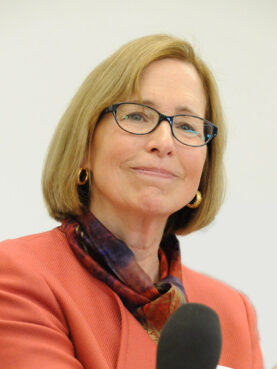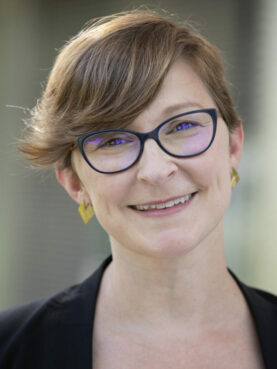
(RNS) — As many as 100,000 church-owned buildings are expected to be sold or repurposed by 2030, according to an analysis in a new book, “Gone for Good? Negotiating the Coming Wave of Church Property Transition.” Though Sunday attendance has recovered in part from COVID-19 restrictions, a decades-long decline has continued to take its toll, and the squeeze on churches has only gotten tighter in the post-pandemic economy, according to fall 2023 data from the Hartford Institute for Religion Research.
As a result, congregations face hard choices about what to do with large sacred structures that are underutilized, costly to keep up and suffering from deferred maintenance.
“Everything keeps getting more expensive, but we have fewer people in the congregation to pay for it,” said Jainine Gambaro, a member of Franklin Reformed Church in Nutley, New Jersey. “We keep going by the grace of God, but it’s an issue.”
Gambaro was one of some 100 church leaders and congregants who gathered online and in person Friday and Saturday (Sept. 20-21) to hear from a lineup of real estate experts about how to reimagine a new future for church buildings. The Future of Church Property conference, organized by Princeton Theological Seminary, focused on turning community needs into grants, partnerships with developers and new business-driven income streams.
“The Future of Church Property” (Courtesy image)
Thanks to the federal Inflation Reduction Act, lots of new dollars are available for renovations, said Lindsay Baker, CEO of the International Living Future Institute, an advocacy group for making buildings healthier, greener and more affordable. “There is a lot of money for you all right now, and that’s not always the case, so that’s exciting,” said Baker.
Congregations were urged to consider social enterprise, a term for using business principles to address social problems while generating revenue. Attendees heard about congregations that had escaped financial dire straits and galvanized new ministry momentum by leasing space to the public for community and commercial use.
Sunset Ridge Church of Christ in San Antonio leases a former “junk room” to NYX Wellness, which painted walls and began offering yoga classes. It now brings in $650 per month for the church. Sunset Ridge’s commercial-quality kitchen is now used by entrepreneurs to prepare food for retail sale, for another $400 per user per month. A coworking space brings together remote workers on a membership model: Each user pays $75 per month for unlimited access.
Getting the congregation on board for these innovations involved many “coffee chats” with the congregation, in which pastoral leaders listened to fears and answered questions, according to Jess Lowry, executive director and pastoral leader of the Sunset Ridge Collective, which coordinates the church’s social enterprises.
“That time we invested ended up really helping people get ownership and understand,” Lowry said. “Even if they weren’t moved to participate in some part of the particular mission, they at least felt safe and comfortable that they weren’t just losing their church.”
The assembled church leaders were directed to resources such as the Good Futures Accelerator course from Rooted Good for other ideas on how to forward their missions while raising revenue.

Nina Janopaul. (Courtesy photo)
Churches with land or buildings that can be developed into housing have huge opportunities in the current housing crisis, according to Nina Janopaul, president of Virginia Episcopal Real Estate Partners. She pointed to Arlington Presbyterian Church, across the Potomac River from Washington, which built 173 affordable housing units, working with a nonprofit developer who pieced together $71 million in direct funding and tax breaks for the project from multiple sources.
The project not only allowed the congregation to keep a presence at its location, Janopaul said, but it also spawned new energy for the congregation as it has mobilized to reach out to its new community and serve its needs.
Many nonprofit developers will cover costs before a project gets started as well, said Janopaul. They may cover predevelopment costs, which can run up to $50,000 for appraisals, zoning analysis and feasibility modeling, in exchange for a commitment to use that developer if the project goes forward.
In many cases, the church will be asked to lease the land to the affordable housing partner for a minimum of 50 years, Janopaul said, which sounds risky. But she added: “At least with a nonprofit, you know that in 50 years you’re not dealing with an individual who will sell it. … Nonprofits, you hope, are going to be around longer.”
Even when partners cover most of the costs, most housing projects take years to complete, and the deals themselves or neighborhood relations can become highly contentious. Congregations that lack the wherewithal and need cash fast might do better to subdivide and sell off parcels, said Janopaul.

Lindsay Baker. (Photo © Billy Howard Photography)
Churches were urged to consider uses that will engage people in their community. “Young people are really motivated by climate action and thoughtful community engagement,” said Baker. Sometimes simply “greening” old buildings can show prospective churchgoers that a congregation shares their values.
Baker suggested improving the health profile of churches while shrinking their impact on the environment by using nontoxic flooring materials, increasing ventilation, replacing oil or gas with electric heat pumps and installing solar panels for power and shade.
Then, she said, take credit for doing so. “There are ways you can make that visible on your landscape and on your signage.”
The lofty visions presented at the conference were partly tempered by financial realities in congregations where even paying utility bills is a challenge. “That’s how we got into this mess, all of us, because there wasn’t money to say, ‘Oh, let’s just fix this’ when something comes up,” said the Rev. Meagan Manas, pastor of Clinton Presbyterian Church in Clinton, Massachusetts, in the session.
But even Manas seemed to realize that surviving was going to take more than simple donations. “The answer to so many of the things (discussed) today feels like it’s money, but that’s not an answer for us. So I’m looking for more creativity.”

